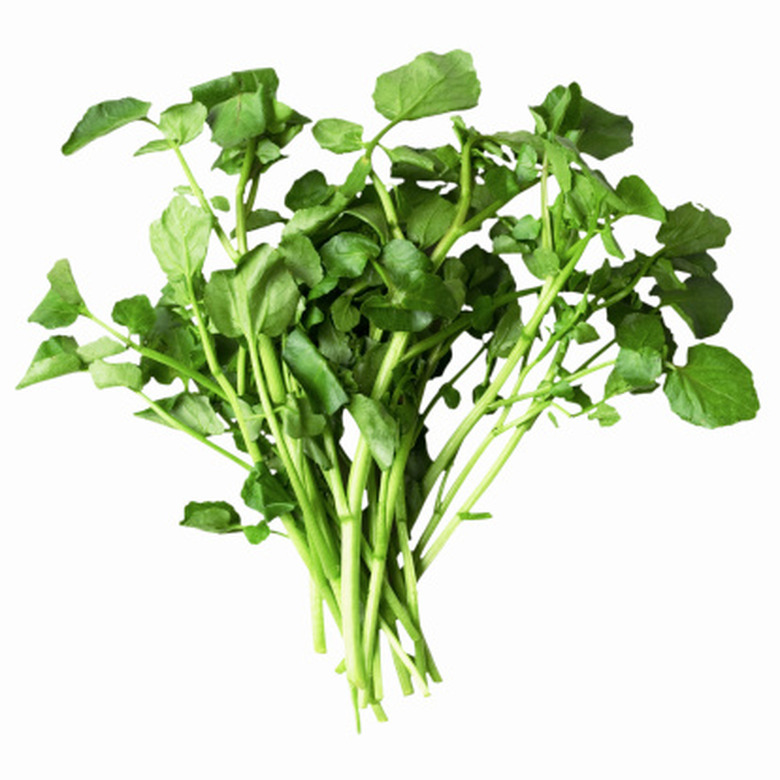List Of Edible Aquatic Plants
When you're taking a stroll through your local park and feeding the geese, or perhaps tending to your home koi pond, you likely don't think too much about the plants you find in and around the water. However, many different aquatic vegetables and various edible wetland plants exist, and some are even quite tasty!
Common Aquatic Plants That We Eat
Common Aquatic Plants That We Eat
Of course, not all aquatic plants are edible. Always make sure to seek the help of an adult when identifying wild edible aquatic plants to make sure you don't eat anything potentially dangerous. Of the aquatic plants we eat, some grow naturally and some you can purchase to grow in your backyard pond. Some of the different edible aquatic vegetables and plants you can find include cattails, watercress, duck potato and water lilies.
Can You Eat Cattails?
Can You Eat Cattails?
You can absolutely eat these edible wetland plants! However, if you've ever seen the viral videos of people eating cattails, you probably know you shouldn't eat the catkin (the tail-like part of the cattail) once it has turned brown and reached seeding time! Once they go to seed, the catkin will only leave you with a mouthful of fluff.
Outside of that, you can eat several different parts of the cattail. You can grill, boil or bake the largest part of the roots – the best time to harvest these is during the fall or winter. Though you shouldn't eat it once it turns brown, while the catkin is green and protected by leaves you can eat it the same way you'd eat corn on the cob. Finally, you can also eat newly grown shoots during the springtime and the white stalks at the base of the plant.
Can You Eat Watercress?
Can You Eat Watercress?
Watercress is an edible aquatic plant with soft, green, oval-shaped leaves. Raw watercress has a somewhat spicy taste similar to wasabi, which lessens after cooking. You can eat any part of the plant, including the white flowers that grow during the spring. However, the roots typically have an unpleasant flavor. People often add watercress to stir-fries, soups and stews.
Can You Eat Duck Potato?
Can You Eat Duck Potato?
Also known as arrowhead for its arrow-shaped leaves, this edible aquatic plant features small potato-like tubers. Despite their name, ducks don't eat this plant. However, you sure can. Duck potato grows in shallow, standing water and can reach up to five feet tall. Many Native American tribes used the roots of duck potato as a source of food, and for good reason! The potatoes have a rich chestnut-like flavor, but require some digging through the mud to obtain them.
Can You Eat Water Lilies?
Can You Eat Water Lilies?
This popular ornamental plant, famous for its beautiful flowers which often come in bright colors, is safe to eat! Not only can you eat water lilies, but you can also eat several different types of water lilies as well. Both yellow and white water lilies are edible, as is the American lotus.
You can pick and boil budding flowers and freshly grown leaves for use as aquatic vegetables in cooking. The seeds are also edible, and you can fry or bake them as you would sunflower seeds or pumpkin seeds. You can also eat the roots, which grow thick tubers that are rich in flavor and carbohydrates. You can cook and prepare them the same way you would cook a potato.
Bear in mind, not all species taste fantastic (though none are toxic). Some have more bitter roots than others even after cooking, so research each species before going to the trouble of harvesting them!
Cite This Article
MLA
Zinni, Yasmin. "List Of Edible Aquatic Plants" sciencing.com, https://www.sciencing.com/list-of-edible-aquatic-plants-13427160/. 18 January 2022.
APA
Zinni, Yasmin. (2022, January 18). List Of Edible Aquatic Plants. sciencing.com. Retrieved from https://www.sciencing.com/list-of-edible-aquatic-plants-13427160/
Chicago
Zinni, Yasmin. List Of Edible Aquatic Plants last modified March 24, 2022. https://www.sciencing.com/list-of-edible-aquatic-plants-13427160/
